Colorado Roof Terms
APP
A modifier of asphalt (see modified bitumen roof membrane) that increases the UV resistance of the bitumen as well as its flexibility at low temperatures and improves its flow resistance at high temperatures.
Base Sheet
A saturated or coated felt installed as the first ply in some multi-ply modified bitumen roofing assemblies.
Bitumen
(1) a class of amorphous, black or dark colored (solid, semi-solid or viscous) cementitious substances, natural or manufactured, composed principally of high molecular weight hydrocarbons and found in asphalts, tars, pitches and asphaltines; (2) a generic term used to denote any material composed principally of bitumen.
Built Up Roof (BUR)
A flat or slightly sloped roof surfaced with alternating (or built up) layers of roofing felt and hot-mopped asphalt, and a layer of gravel or crushed rock on top.
Coated Sheet (Felt)
(1) an asphalt felt that has been coated on both sides with harder, more viscous asphalt; (2) a glass fiber felt that has been simultaneously impregnated and coated with asphalt or coal tar on both sides.
Cold Applied Roofing
A continuous roof membrane, consisting of plies of felts, mats or fabrics that are laminated on a roof with alternate layers of cold-applied roof adhesive and surfaced with a cold-applied coating.
Deck
The structural surface to which the roofing or waterproofing system (including insulation) is applied.
Drip Edge
A type of flashing made of thin strips of metal or plastic that extend the length of eaves and rakes to facilitate water runoff.
Eave
The edge of the roof that projects beyond the house wall.
Exposure
The portion of each shingle or tile exposed to the weather. Also called “Weather Exposure.”
Fascia
Wood or other trim covering the ends of the rafters
Felt
A flexible sheet manufactured by the interlocking of fibers through a combination of mechanical work, moisture, and heat. Felts are manufactured principally from vegetable fibers (organic felts), glass fibers (glass fiber felts), or polyester fibers (polyester felts); other fibers may be present in each type.
Fiberglass Mat
An asphalt roofing base material manufactured from glass fibers.
Flashing
Pieces of metal or roll roofing used to prevent seepage of water into a building around any intersection or projection in a roof, such as vent pipes, chimneys, adjoining walls, dormers and valleys. Granules: Ceramic-coated colored crushed rock that is applied to the exposed surface of asphalt roofing products.
Granules
Ceramic-coated colored crushed rock that is applied to the exposed surface of asphalt roofing products.
Hip
The inclined external angle formed by the intersection of two sloping roof planes. Runs from the ridge to the eaves.
Incline
The slope of a roof expressed either in percent or in the number of vertical units of rise per horizontal unit of run. Also referred to as slope.
Interlocking Shingles
Individual shingles that fasten together mechanically and provide greater wind resistance.
Laminated Shingles
These shingles have more than one layer of tabs to create extra thickness. They are often referred to as three-dimensional or architectural shingles because they create visual depth on a roof and impart a custom look.
Re-Covering
The process of covering an existing roofing system with a new roofing system.
Re-Roofing
The practice of removing an existing roofing system and replacing it with a new roofing system.
Wood Shingles and Shakes
Shakes are typically made of cedar, spruce or treated pine. Hand-split shakes have a rough, textured look on the front and often smooth on the back. Wood shingles are machine sawn smooth on both sides. Generally, cedar is the highest performing wood for making shakes. But, treated pine shakes also perform well. Shakes are brown or reddish in color when new, but usually fade in the first year to a gray color.
Tile
Tile comes in a vast array of beautiful styles, colors and finishes adding to every home’s beauty and architectural styling. There is also a wide selection of carefully blended hues that range from subtle tints to vibrant colors, and wood and slate textures that simulate nature.
Slate
Slate (stone) shingles are highly durable (100+ years); but about 3 times heavier per square foot than asphalt. Slate is a bit more difficult to work with and less forgiving than asphalt shingles because they break easily. However, a slate roof can create a colorful, hand-crafted look that adds to the overall appearance of a house.
Metal Roofing
Metal roofing is a non-combustible, corrosion resistant and fully recyclable product – perfectly suited for today’s needs, lifestyles and environmental priorities. It has outstanding durability and is suitable for extreme weather conditions. It can be installed over existing roofing, eliminating tear off costs, mess and disposal problems.







